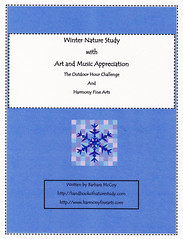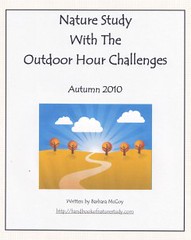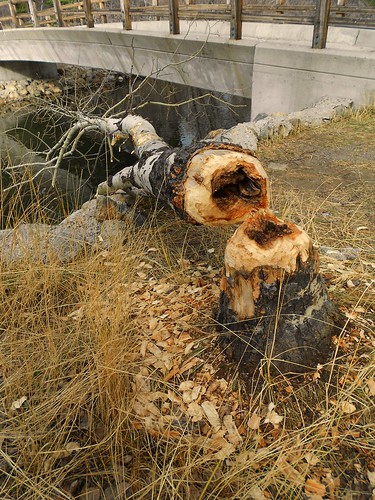
Right near where we parked the car and started on the trail we noticed that a beaver had gnawed this tree down...can you believe how strong that beaver must be? We weren't sure if he was going to come back for the log but we marveled at his ability to bring down a rather large tree.
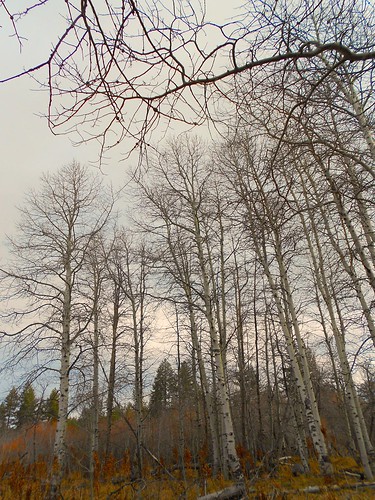
We hiked through the mixed conifer and deciduous forest, noting that the aspens were all bare but still very beautiful. We listened to the bird sounds and a squirrel chattering too. We saw and heard Steller's jays, common ravens, California gulls, mallard ducks, white-headed woodpeckers, Canada geese, and an osprey. It was a great day for birds.
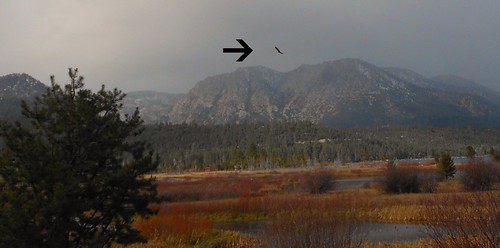
We stopped along the trail to view the meadow and marsh. This spot is known to be an eagle habitat so I had my eyes open wide hoping to see one this day. And.....I was not disappointed. A bald eagle flew very majestically above the meadow from the pine forest and then out over the lake. I was very excited to see this graceful bird as he flew right overhead and then disappeared. It was a moment.
In the photo above you can see how it was snowing up on the mountain peak and we even at one point had soft flakes of snow coming down on us but it didn't last long or stick to the ground at all. It was a perfect day for a hike.

Journal tip: It can be overwhelming when you have so many subjects to write about in your journal. It helps to focus on just one of the highlights like our encounter with the eagle and a list of birds. I don't like to draw birds so I used a photo and then answered the three main questions: when, where, what.
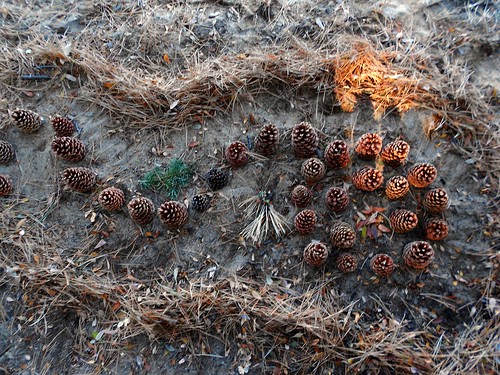
When I take my creative daughter with me, we always find a way to do something fun. This time we settled on making an Andy Goldworthy style art piece using natural items. There were loads of pinecones on the ground so we decided to feature those in our sculpture.
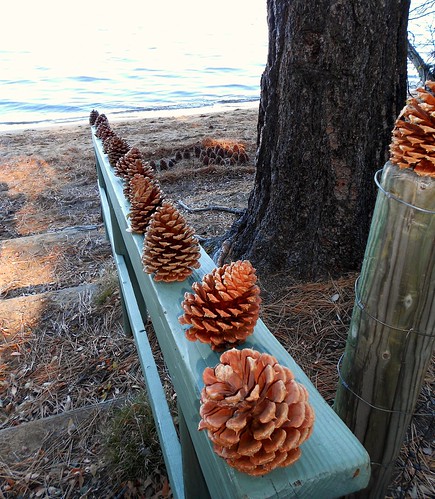
While we were busy with our sculpture, my husband added this line of pinecones leading down the stairway to our artwork. It made me smile and feel appreciative of the support of a great guy for his nature-loving wife.

On the hike back we found a patch of thistles to admire. After studying them this autumn I have a new found appreciation for their features. So pretty even now.

We also saw where the beaver is attempting to build a dam across the creek. The creek is flooding part of the trail right now because of the water backed up behind the dam. We had to circle around to avoid needing to wade through the creek. This is exactly where we saw the mama and two baby bear cubs earlier this fall...no signs of them now.
As always, we were rewarded for our efforts to get outdoors and do some exploring. The informal nature study opportunities were everywhere and I made some mental notes on topics we were curious about as we hiked along. Some afternoon on a cold winter day I will pull out some field guides and we will research a few of the answers to our questions. Nature study truly is a life project.














